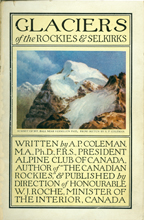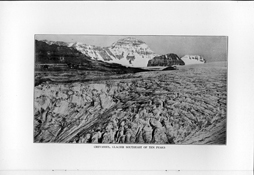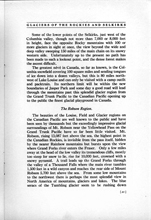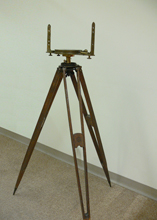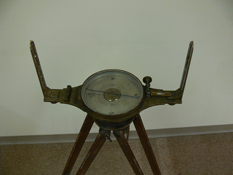The Science of Mountain Exploration
Are the Selkirk Mountains of Volcanic Origin?
Following the C.P.R. from west to east there are first about seventeen miles of very ancient rocks, granites and gneisses of the Archaean. These rocks, with the nearest parts of the Gold Range to the west, represent the old nucleus or “protaxis” of the western ranges. They probably formed an important mountain range in the earliest times, but being so old, have suffered the penalty of aging in mountains and have been greatly cut down.
Following the granites, eastwards there are 15,000 feet of dark slate and schist, once muddy sediments on a sea bottom, now thrown into folds, first a syncline or downward fold, afterwards an anticline or upward fold. Then come lighter colored series of quartzites and conglomerates, often schistose with the shimmer of mica scales. Near the summit these rocks make a syncline, but toward Beaver Creek they have been bent into an anticline and broken across by a great fault. The thickness of these rocks Dr. Dawson puts at 25, 000 feet. (continued)
A.P. Coleman, 1911,“A Note on the Geology of the Selkirk Mountains.” Canadian Alpine Journal 3: 119– 120
